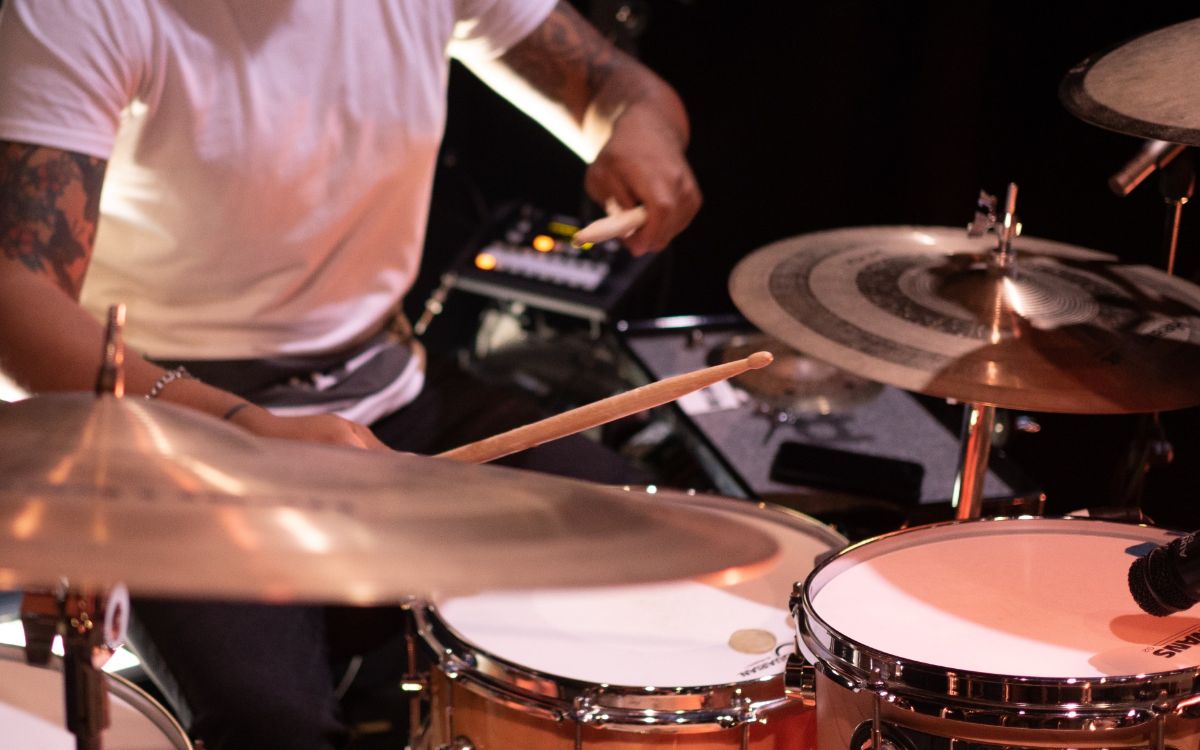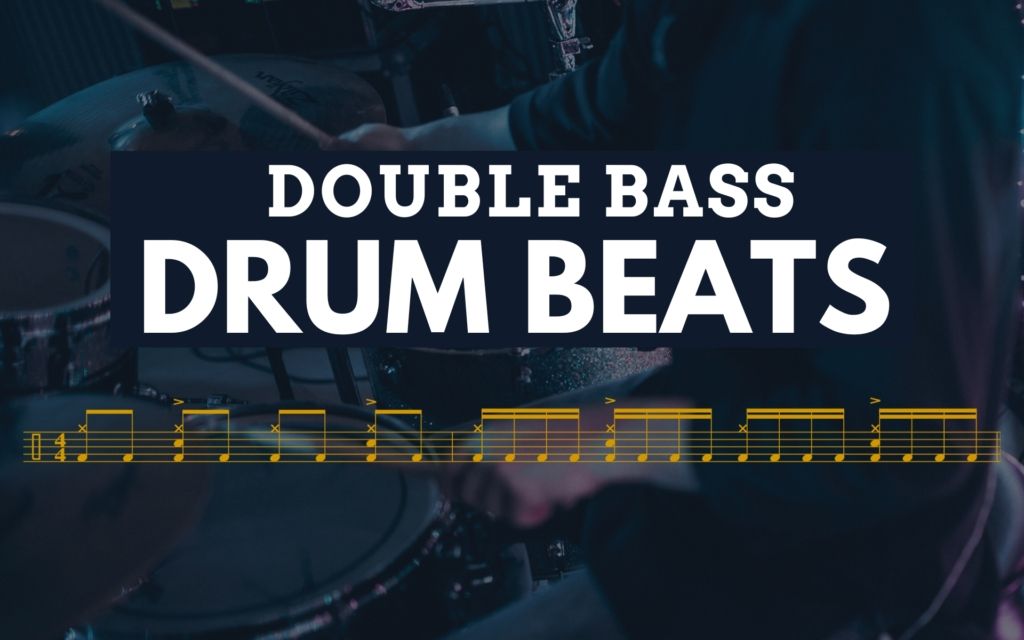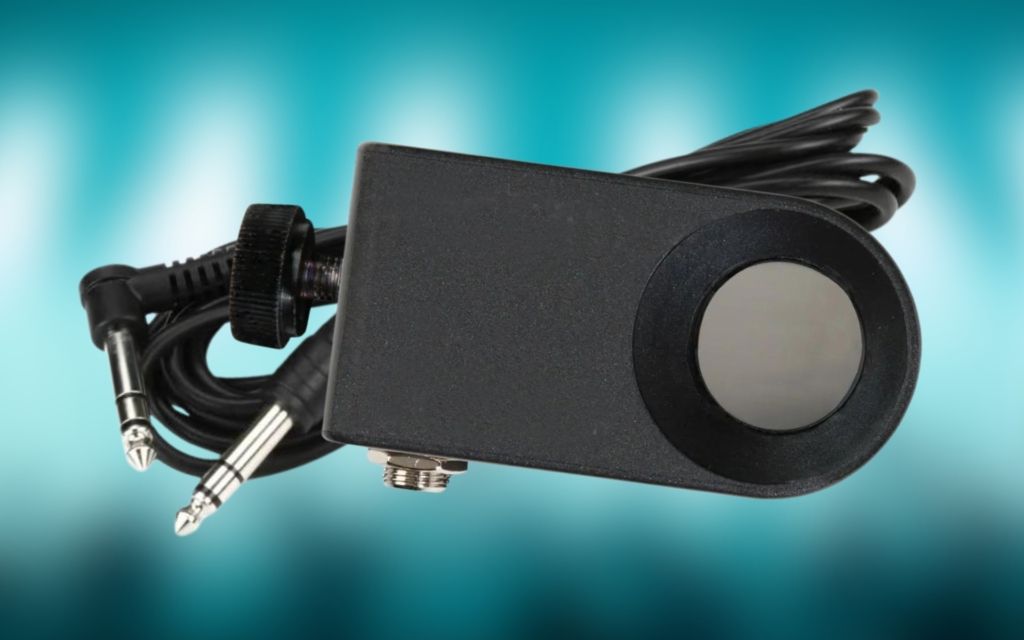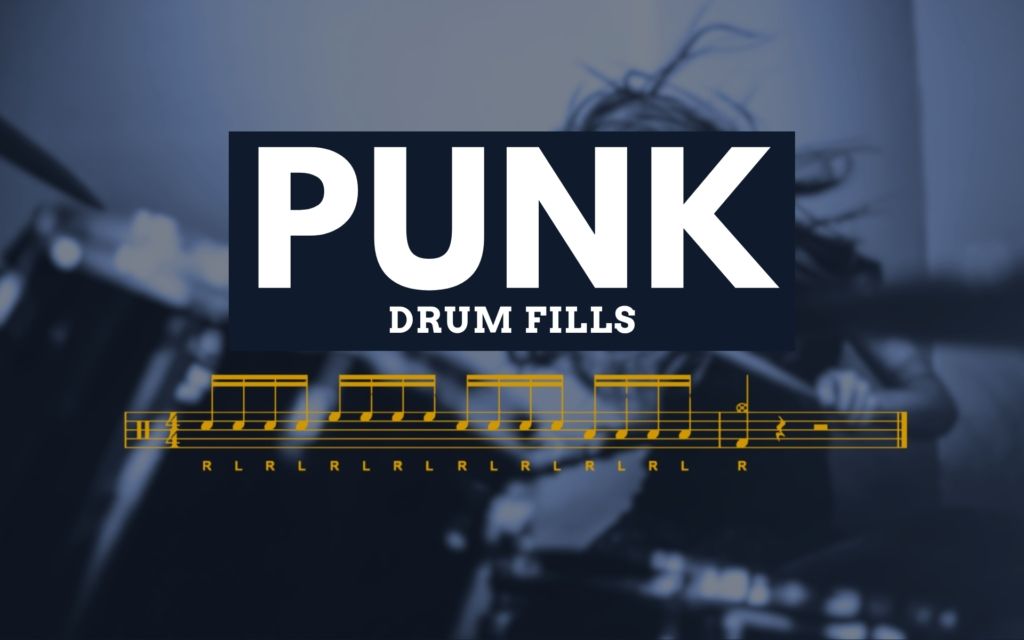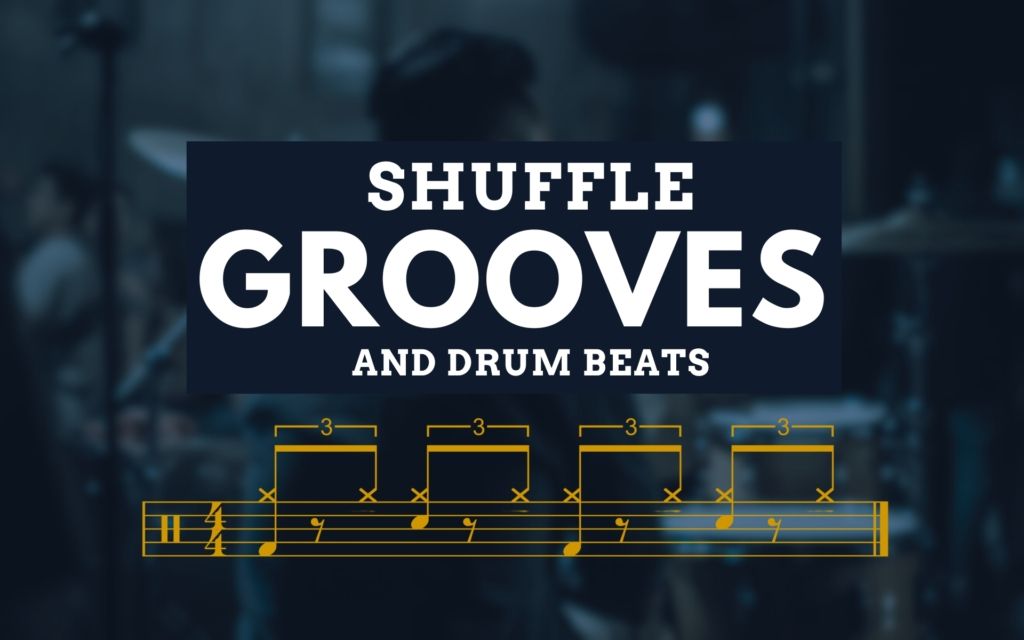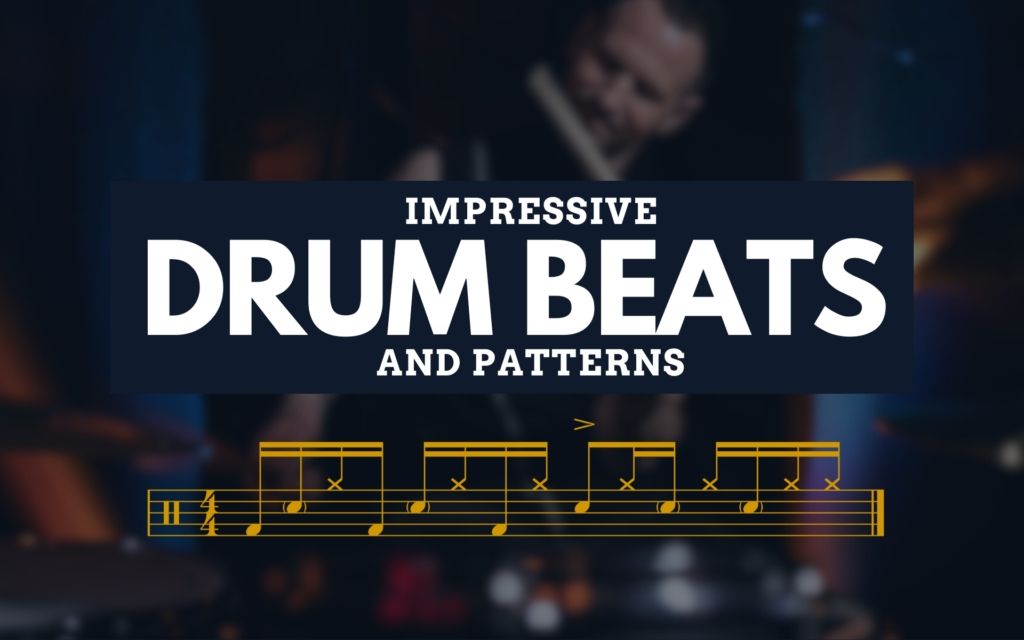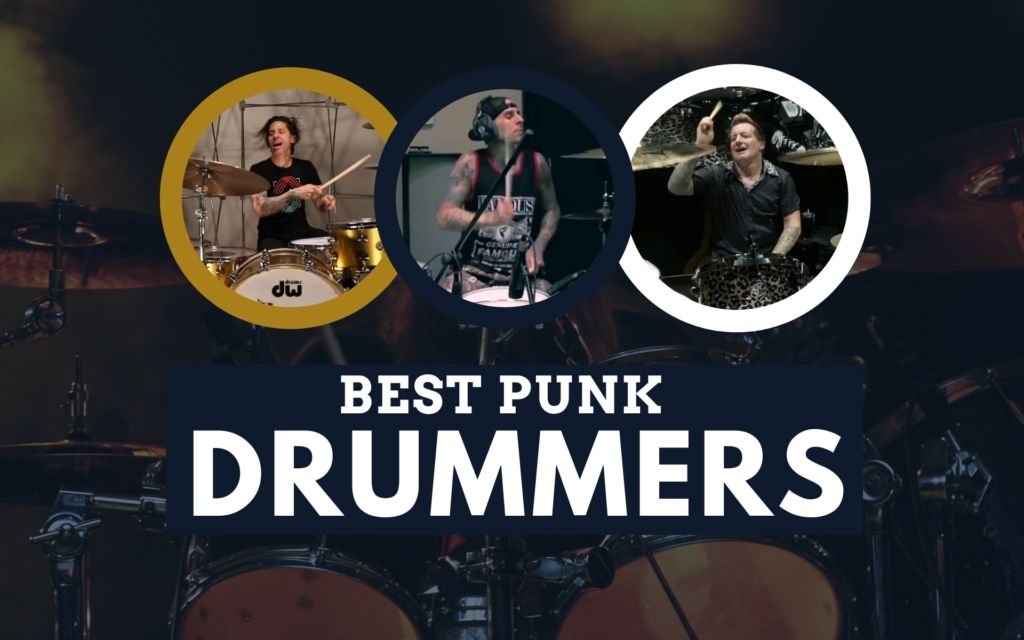There’s always something new to learn for drummers, both for beginners or advanced players. You may think that you’re learning enough by mastering how to play along with your favorite genres of music, such as metal or rock music. But learning different styles of drumming will help you to become a more well-rounded and versatile musician.
If you’re beginning on your drumming journey, consider learning modern rock, pop, and country first as they have similar beats. Jazz and blues are other options for intermediate drummers. And if you’re looking for a distinct style, try reggae, Latin, or Metal.
Here’s a list of eleven popular drumming styles that every drummer should master if they hone their skills. These types of drumming all influence each other, and learning one will help you learn all the others.
Contents
Modern Rock
Rock music is all about power. The drums are loud, and drummers are encouraged to hit hard without losing technique. However, always be ready to pull back for a song’s quieter sections. This kind of volume control is called dynamics, and it’s a crucial part of being a solid musician.
Mastering dynamic control will enable you to play music that can captivate a listener. Music has a lot of build-ups, tension, and release. It’s what makes a song feel more like a journey, with a chorus that bursts to life and intimate softer sections.
Rock is most often played in 4/4 time, meaning there aren’t many complex rhythms that will throw you off. But there’s a lot of different subdivisions, including frequent 16th note semiquaver fills across the toms and snare.
The more songs you learn, however, the more you’ll find exceptions to this rule. Great musicians take elements from music worldwide and incorporate them into genres that people don’t expect. That’s how you get songs like Rush’s “Tom Sawyer,” played in ⅞ time.
That’s why you need to familiarize yourself with all types of drumming! The more you know about the drums, the more you’ll be able to play.
Where to Start
- Start with dynamic control, ensuring you perform with power and consistency with both your right and left hands.
- Master 4/4 time, hitting your bass drum firmly on the ‘1’ and ‘3’ beats, and the snare on ‘2’ and ‘4’.
- Classic example: Deep Purple’s “Smoke On The Water.”
Pop
Pop drumming is distinct from modern rock drumming, but it’s similar in many ways. For instance, you’ll find yourself focusing on dynamic control, just like in rock music. You can also rely on most classic pop songs to use a simple 4/4 time signature, making people want to dance.
Pop drumming is also possibly the most versatile since pop depends on changing musical trends and “pushing the envelope.” Pop will incorporate elements from every other genre on this list and some simply because it isn’t limited by its style.
In pop music, you’ll be required to play the closed hi-hats more frequently, and the overall vibe is softer than rock music. So tone down the aggressive playing just a little, but still ensure your snare drum and kick drum hits come through audibly.
Drummers for pop artists are required to play additional parts, and they often use electronic drum pads to trigger backing tracks or melodic percussion.
Where to Start
- Practice 4/4 time and dynamic control, and keep it simple.
- Incorporate some electronic elements with a drum sample pad.
- Classic example: Justin Timberlake’s “Señorita.”
Country
Rock, pop, and country music tend to work with extremely similar drum beats. You want to make sure that you’re controlling your dynamics well, and you’ll usually be playing a straightforward time signature.
One of the defining beats in country-style music, particularly old country music, is the train beat. As you might guess, it’s meant to mimic a train and consists of a quick rapping on the snare drum and playing quarter notes on your bass drum—much like a train on the tracks.
Where to Start
- Learn how to play simple time signatures commonly found in rock and pop.
- Practice your train beat.
- Classic example: Johnny Cash’s “I Walk The Line.”
Metal
Dynamics and speed are even more important in metal music than in modern rock. Metal music gets LOUD, then will take it right back down to a whisper. It’s also super fast. So you’ll need to work on your single stroke rolls!
One important technique that shows up more often in metal than in other genres is double bass. Using either two separate bass drums or a double bass drum pedal creates a thunderous sound that often defines metal music.
Drum triggers are also often used to achieve this effect. These electronic attachments pick up vibrations on the drum head and send an electronic signal to a drum module, which then produces any desired sound.
In short – using triggers makes it easier to achieve lightning-fast kick drum speeds because power isn’t important while playing with triggers.
Where to Start
- Practice improving your double bass technique and speed.
- Work on quick dynamic changes: super loud to super-soft with precision and control.
- Classic example: Motorhead’s “Overkill.”
Blues
Rhythm & blues music is distinct from modern rock music since modern rock tends to rely on dynamics, catchiness, and attention-grabbing power chords. Blues depends on a steady, syncopated beat so that others can improvise over it.
Most blues beats rely on a simple 12/8 pattern, with four beats made up of three eighth notes each. That translates to playing your hi-hat twelve times in a bar and your bass drum on the second and fourth beat. The 12/8 beat is what gives blues that bouncy sound.
Where to Start
- Practice the 12/8 blues pattern (read my guide to blues drumming here)
- Practice improvisation with other musicians!
- Classic example: Eric Clapton’s “Before You Accuse Me (Take A Look At Yourself)”
Reggae
The most important thing to remember about reggae music is that every musician needs to listen to each other so that the featured instruments can improvise. Just like in blues and jazz, no two playthroughs of a song will sound the same.
There are three essential reggae beats. The first is called the one drop, relying on a snare drum on the backbeat and a bass drum on the third. One famous drummer that made the one drop his signature sound was Carlton Barrett, Bob Marley’s drummer.
The second are rockers, which are often a little slower than one drop. Rockers use a bass drum to every eighth note in the pattern as well. Finally, there are what’s called steppers, which add the bass to every quarter note.
These can be tricky to the uninitiated, but once you master them, you’ll quickly become a natural.
Where to Start
- Master the one drop, rocker, and stepper patterns.
- Practice switching between each pattern at different intervals.
- Classic example: Bob Marley’s “Could You Be Loved.”
Jazz
Another very popular drumming style that’s very reactive, jazz drummers need to stay alert to the tempo of other players. Jazz music is typically based on swinging triplet-based beats, and the cymbals are the most important part of the instrument.
One of the most important techniques you’ll encounter in jazz drumming is the use of brushes, which offer texture and a softer dynamic to your drum playing. If you need to purchase a set of drum brushes, check out my article on the best jazz drum brushes.
Where to Start
- Practice playing on your cymbals with brushes, and start swinging on the ride cymbal with your lead hand.
- Work on your triplets!
- Classic example: Miles Davis’ “Bag’s Groove.”
Funk
Funk rhythms use repetition but tend to be much more unique and syncopated than the simple rhythms often employed in rock music. These funky repetitions are also called ostinatos.
You may also find that funk songs often bark their hi-hat at the start and finish of their songs. Hi-hat barking gives sounds made with the hi-hat very short, staccato durations. These sounds are what make funk music so punchy and fun to dance to, despite often shirking the tried-and-true 4/4 time signatures.
Where to Start
- Learn to bark your hi-hat.
- Learn some of the common ostinatos used in funk.
- Classic Example: Parliament’s “Mothership Connection”
EDM
You might’ve never considered that electronic music is one of the key styles of drumming. Yet, as musicians continue to blend genres, there’s an increasing chance that drummers will find themselves auditioning for a genre of music they’ve never considered a “live” music genre—such as electronic and dance music or EDM.
Drummers might be emulating a drum machine. To do that using a drum set instead of a computer, you can use one of the techniques we’ve already seen used in metal music: the double bass technique. Make your drums sound like the heartbeat of the people on the dance floor.
Ghost notes are also often used in EDM, or notes without pitch that contributes to the feel or beat. These are extremely softly hits played against a drumhead, most often the snare drum.
Most important of all is accuracy. When you’re keeping up with machines, you have to hit each note at exactly the right time.
Where to Start
- Practice techniques like the double bass technique and ghost notes.
- Work on your accuracy by playing along to techno beats for extended periods—at least ten minutes at a time.
- Classic example: Skrillex’s “Scary Monsters And Nice Sprites.”
Latin
If you haven’t had much experience with Latin-style drumming before, you may struggle with the beats, which are much different than the most common drum styles in Western music. The best thing to do is memorize the popular Latin patterns of drumming by playing along to the simple beats and building from there.
For example, the rhumba is a relatively simple beat to start out at first that can be built upon with variations. It’s simply a two-bar pattern that uses only five beats between them and can be divided up two-and-three or three-and-two.
There are dozens of other Latin beats for you to learn, but even getting a few of them down will improve your drum skills dramatically.
Where to Start
- Master at least three Latin patterns, such as the rhumba, the bossa nova, and the salsa.
- Follow the lead of the brass section.
- Classic example: Daniel Ponce’s “Basta de Cuentos.”
Caribbean
Caribbean drumming is distinct from Latin drum styles, even though they tend to use the same syncopated patterns and danceable rhythms. Calypso rhythms originated in the Caribbean, a drumming style that uses the steel drum as its signature sound.
Other styles that originated in the Caribbean include soca, a syncopated rhythm similar to calypso, and zouk, an electronic-based sound that tends to mimic drum machines.
Using Caribbean-based beats in your own music will impress your peers and may even inspire you to learn an entirely new sound.
Where to Start
- Master calypso and soca, as well as any other Caribbean beats that catch your eye.
- Mix your knowledge of EDM drumming with Caribbean music to learn zouk.
- Invest in a steel drum.
- Classic example: Soca Boys’ “Cent, 5 Cent.”
Final Thoughts
This drumming styles list gives you a great starting point for opening yourself up to many diverse drumming techniques. Even familiarizing yourself with just a song or two from each of these genres will help improve your playing. Plus, you’ll be able to play with a much wider variety of musicians.

